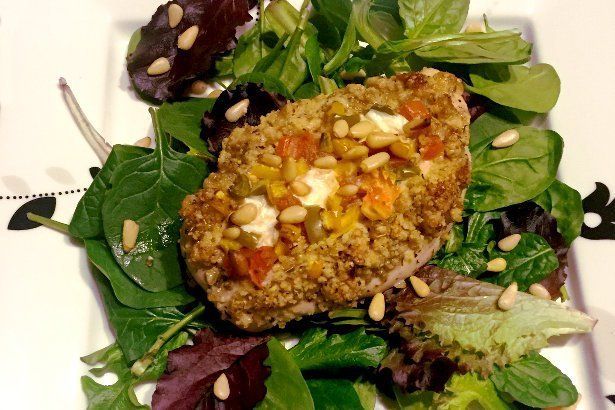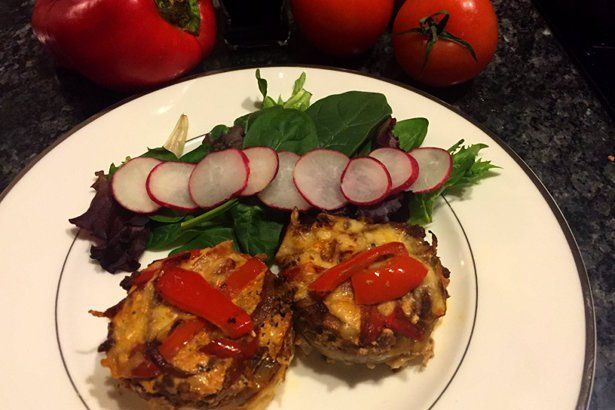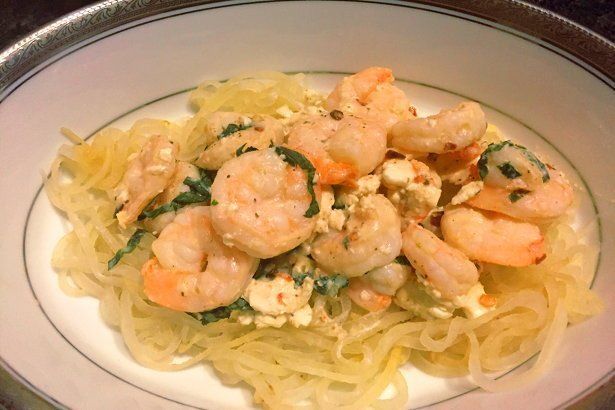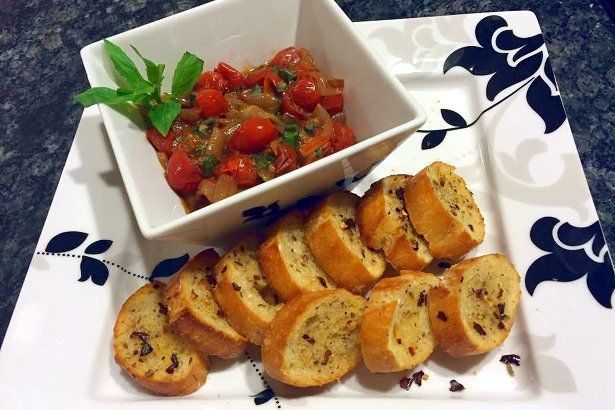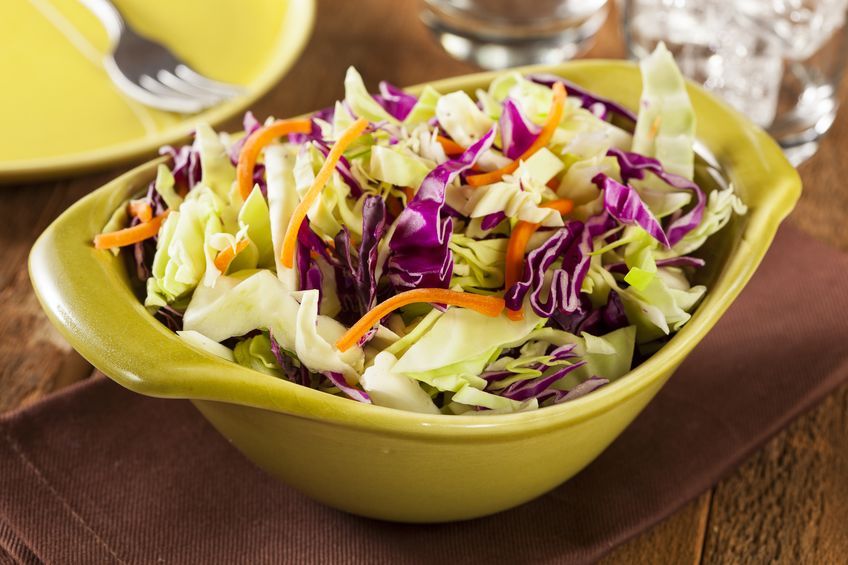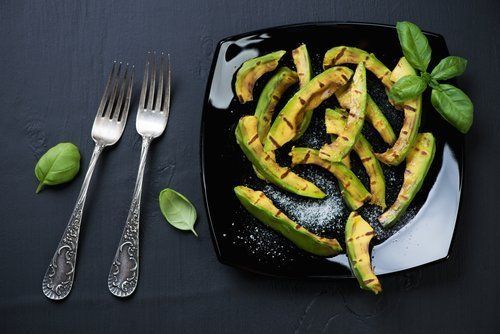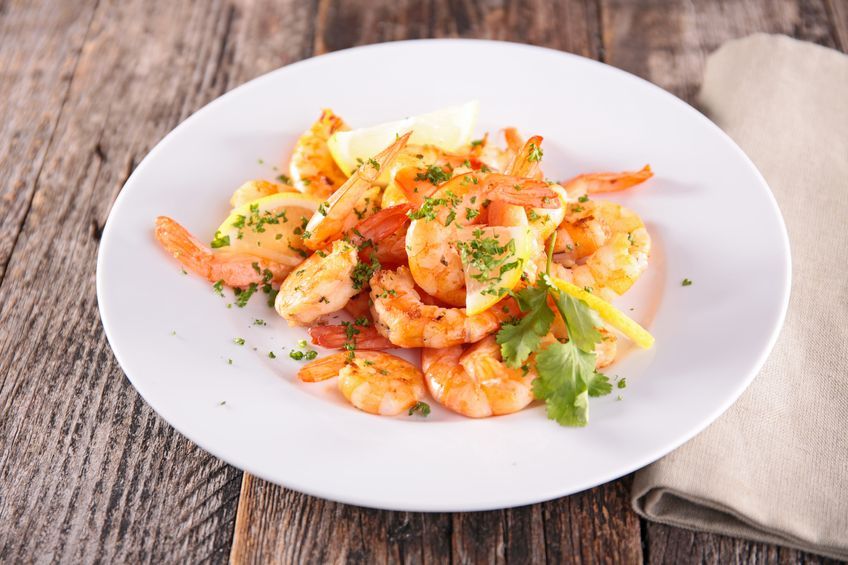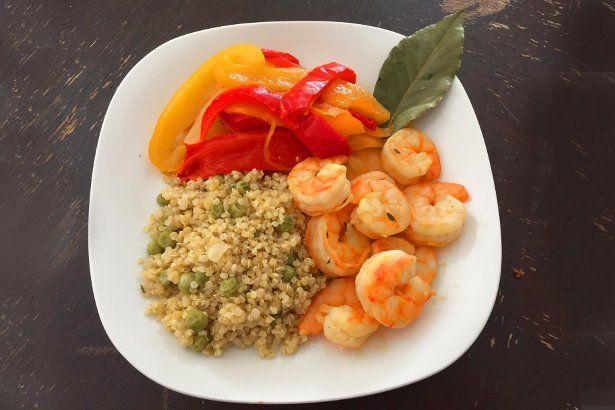
Serves 8
As a registered dietitian, I love hosting healthy dinner parties. One of my favorite ingredients is shrimp, because it’s a lean protein and good source of vitamin D. However, it can be tricky to cook a large batch of shrimp just in time for your guests without overcooking it. The beauty of using a crock pot is that you can allow your dish to finish cooking while you greet your guests. The bell peppers in this dish provide more than aesthetic appeal as a good source of potassium and the antioxidants beta-carotene and capsaicin. Quinoa is an excellent plant-based source of protein that provides all the essential amino acids as well as plenty of fiber. Unlike other starchy vegetables, peas also provide protein and fiber which are nutrients beneficial for satiety and blood glucose control. Serve this colorful dish that requires little active preparation time and be assured that your guests will receive a delicious meal with a host of nutritional benefits.
Ingredients For the Quinoa:
1.5 cups quinoa, rinsed
½ cup finely diced onion
2 cloves garlic, pressed or diced
3 cups vegetable broth
1/4 cup white wine
1 cup sweet peas
5 sprigs of fresh thyme
For the shrimp:
2 lbs. Blue Ribbon shrimp, peeled and de-veined
1 cup each of red, orange, and yellow bell peppers, cut into strips
1 onion, cut into strips
4 cloves of garlic, thinly sliced
1/2 cup of vegetable broth
1 cup white wine
1 Tbsp. fresh thyme
5 fresh bay leaves
Salt and white pepper to taste
Juice of one lemon
Directions:
1. Bring vegetable broth and wine to a boil. Add quinoa and peas, reduce to a simmer, and cover. Cook 25-35 minutes, stirring often. Quinoa is done when it “pops” and looks like it has formed tails.
2. Sauté garlic, peppers, and onions with vegetable broth until slightly softened. Transfer to crock pot, add herbs, wine, and shrimp. Cook 30 minutes on low setting or until shrimp are pink and curled. Squeeze with fresh lemon juice and serve.
Nutrition information (per serving): 338 calories, 5 grams of fat, 31 grams of carbohydrates, 5 grams of fiber, 34 grams of protein
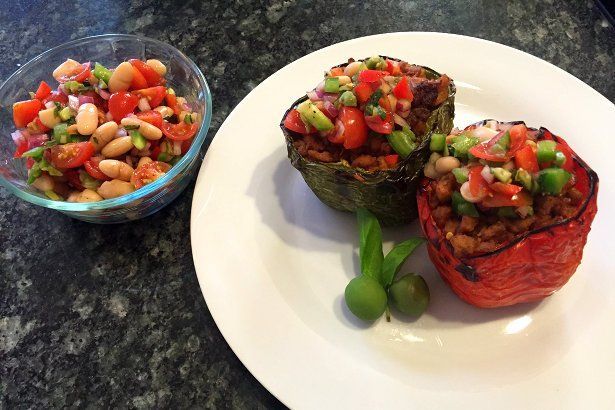
This time of year often calls for hearty, savory dishes that make your mouth water. It’s possible to enjoy these flavors while keeping options light and healthy. This dish uses a combination of pork sausage and lean ground turkey to provide the sensation of eating sausage while reducing the sodium and fat. Instead of being smothered with melted cheese, the peppers are topped with a colorful salsa that contains beans for fiber and extra protein, as well as Castelvetrano olives that provide a crunchy bite, fruity flavor, and a burst of bright green. Olives are a good source of monounsaturated fats. This dish will add some red and green to your dining table, as well as protein, fiber, vitamin C, lycopene and heart healthy fats.
Ingredients
Peppers:
16 ounces Blue Ribbon lean ground turkey
3 links Blue Ribbon pork sausage, removed from casing
1 yellow onion, diced
1 tsp. minced garlic
2 tsp. fennel seeds
1 tsp. cumin
1 Tbsp. dried oregano
1 tsp. crushed red pepper flakes
3 red bell peppers
3 green bell peppers
Salsa:
1 pint cherry tomatoes
¼ cup diced red onion
¼ cup finely diced green bell pepper
¼ cup finely diced red bell pepper
1 cup cannellini beans, drained and rinsed
1 Tbsp. finely minced basil
3 Tbsp. balsamic vinegar
15 Castelvetrano olives (any green olives will work), fined diced
Juice of 1 lemon
Salt and pepper to taste
Directions
1. Sauté onions and garlic with 1 tsp. olive oil or cooking spray in a nonstick pan. Add ground turkey and sausage until onions and translucent and turkey is no longer pink. Add spices.
2. Combine salsa ingredients and let sit in refrigerator at least 30 minutes (overnight is recommended).
3. Broil peppers on each side for 1-2 minutes. Add turkey mixture to peppers and bake at 350 degrees for 15-20 minutes or until peppers are slightly softened.
4. Top each pepper with a spoonful of salsa and enjoy!


